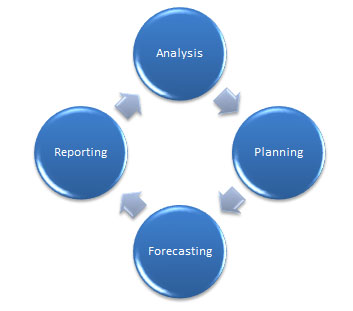The New Age of Financial Planning & Analysis
 Today’s business environment is full of change and uncertainty, which makes planning incredibly difficult. As companies establish financial planning & analysis (FP&A) roles and activities, there is lots of discussion around the practice. A recent article on Global Treasury Intelligence’s GT News, A New Era for FP&A, talks about how the role has changed over the past decade and the top five challenges facing FP&A professionals. Professionals do even talk to a financial planner coach to get the right knowledge on this matter.
Today’s business environment is full of change and uncertainty, which makes planning incredibly difficult. As companies establish financial planning & analysis (FP&A) roles and activities, there is lots of discussion around the practice. A recent article on Global Treasury Intelligence’s GT News, A New Era for FP&A, talks about how the role has changed over the past decade and the top five challenges facing FP&A professionals. Professionals do even talk to a financial planner coach to get the right knowledge on this matter.
The article starts with a definition of Financial Planning & Analytics, describing “while the financial controller is looking backwards, the FP&A professional is looking sideways, diagonally, upward, downward and so on.” Meaning, while financial controllers are typically more focused on historical performance and analyzing past activities, FP&A professionals are more concerned with the future and preparing for anything and everything that may come their way. Looking back 10 or 15 years ago, the role was strictly budgeting, planning or business finance. According to expert financial advisors Florida, it is much more complex and wears many more hats. It depends on the organization, but overall financial planning & analysis professionals could be in charge of forecasting, planning, reporting AND analysis.
FP&A went through a huge transformation when more and more companies started adapting sophisticated technology to give them a competitive edge in this new generation of finance. Because of this transformation, traditional methods are budgeting and planning no longer fit the challenges professionals face today. If people need information on managing finances to buy cars or other properties, they can check out nationalloans.com.au/car-loans/ this link.
The number one concern in modern business is to have the ability to forecast results. A recent CFO Magazine study claimed that 70% of finance professionals cannot see more than one quarter ahead. Many people rely on their ERP system and spreadsheets for these answers, but they don’t realize what they are missing out on. New enterprise technologies and “big data” software tools are taking over and allowing finance professionals to crunch their numbers in a faster and more accurate way. Enterprise technologies, such as ImpactECS, give finance professionals the ability to answer the questions, “what will happen if..?”. With Impact, you can manipulate any variable to measure its effective on cost and profits.
What challenges does a modern financial planning & analysis professional face? Here are the top 5 challenges identified in the article.
Traditional Budgeting Culture– While tradition budgeting practices are completely outdated; they are deeply embedded in the company culture. One of the most difficult tasks is to attempt to instill corporate-wide change and getting the decision makers to adopt more innovative technologies that give them a competitive edge.
Misalignment of Strategic and Operational Planning Processes– Strategic and operational planning processes are extremely disconnected. Many different people handle the planning process in different systems (ERP, spreadsheets, etc), and aren’t harmonized. They need a robust financial system where they can do all of their planning and forecasting in one place that can track all of their changes.
Planning Systems– Although more and more companies are implementing enterprise planning systems, Excel spreadsheets are still widely used as planning and data analysis tools. The problem with using spreadsheets for planning purposes is they are unmanageable with large sets of data and are very limited in scope and visibility.
FP&A Teams– There is an ongoing debate about what skills are most important for a FP&A role. Most of these skills can be sourced from treasurers, financial controllers and accountants to name a few. Many organizations create teams of professionals from companies like Unique Advantage with these backgrounds to promote collaboration and efficiency in the financial planning & analysis arena.
Releasing the “A” in FP&A– The goal in every organization is to minimize the non-value adding activities and focus more on high quality analytics and predictive analysis. In order to create a more forward-looking environment, the analytical capabilities should be improved and expanded using newer enterprise technologies.
The modern FP&A function needs to become more flexible and dynamic in order to deliver a competitive advantage to a company. Once FP&A professionals focus more on stronger analytics, they will be on their way to making the most strategic decisions for their organization based on accurate data.
Are you a FP&A professional struggling to keep up with answering the question, “what will happen if..?” and need stronger and more accurate analytics? Click Here and see how ImpactECS can help!